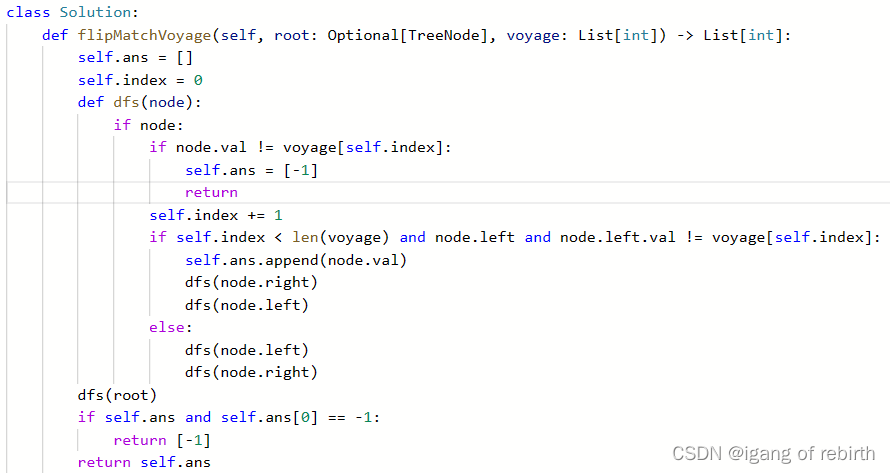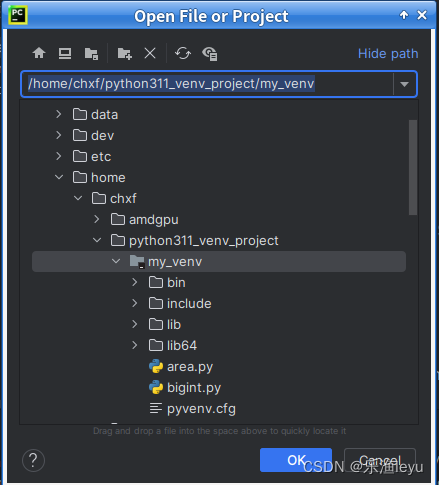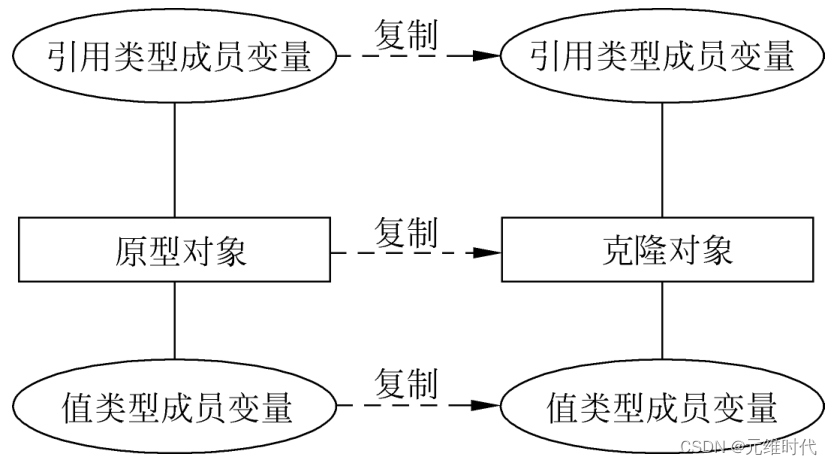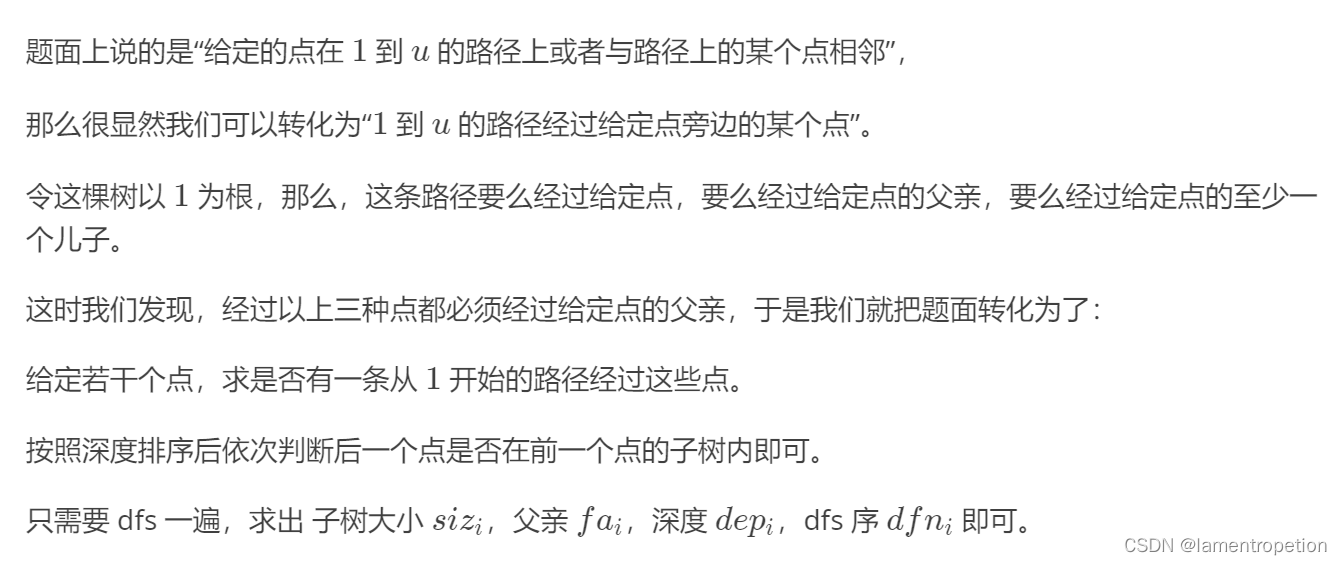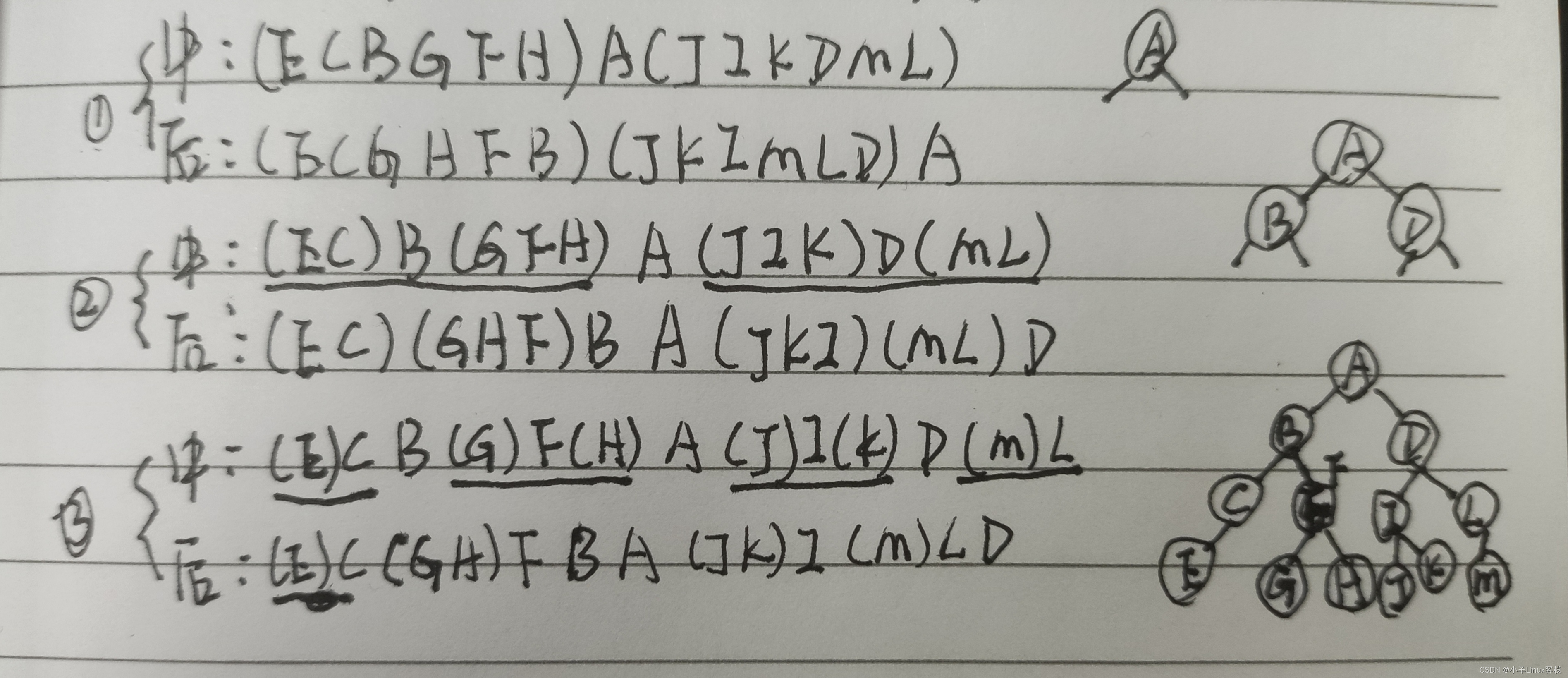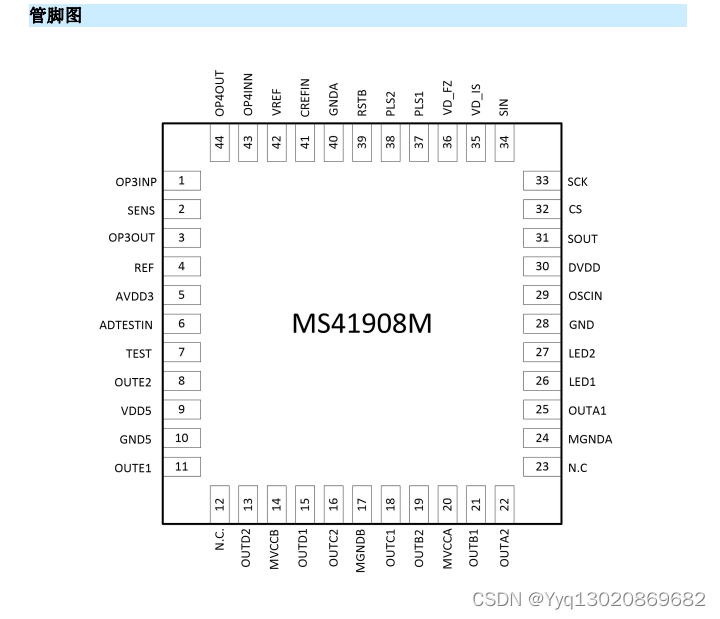
题目来自 Golang vs. Rust: Which Programming Language To Choose in 2023?[1]
141. Iterate in sequence over two lists
Iterate in sequence over the elements of the list items1 then items2. For each iteration print the element.
依次迭代两个列表 依次迭代列表项1和项2的元素。每次迭代打印元素。
package main
import (
"fmt"
)
func main() {
items1 := []string{"a", "b", "c"}
items2 := []string{"A", "B", "C"}
for _, v := range items1 {
fmt.Println(v)
}
for _, v := range items2 {
fmt.Println(v)
}
}
a
b
c
A
B
C
fn main() {
let item1 = vec!["1", "2", "3"];
let item2 = vec!["a", "b", "c"];
for i in item1.iter().chain(item2.iter()) {
print!("{} ", i);
}
}
1 2 3 a b c
142. Hexadecimal digits of an integer
Assign to string s the hexadecimal representation (base 16) of integer x.
E.g. 999 -> "3e7"
将整数x的十六进制表示(16进制)赋给字符串s。
package main
import "fmt"
import "strconv"
func main() {
x := int64(999)
s := strconv.FormatInt(x, 16)
fmt.Println(s)
}
3e7
or
package main
import (
"fmt"
"math/big"
)
func main() {
x := big.NewInt(999)
s := fmt.Sprintf("%x", x)
fmt.Println(s)
}
3e7
fn main() {
let x = 999;
let s = format!("{:X}", x);
println!("{}", s);
let s = format!("{:x}", x);
println!("{}", s);
}
{:X} produces uppercase hex. {:x} produces lowercase hex.
3E7
3e7
143. Iterate alternatively over two lists
Iterate alternatively over the elements of the list items1 and items2. For each iteration, print the element.
Explain what happens if items1 and items2 have different size.
交替迭代两个列表
package main
import (
"fmt"
)
func main() {
items1 := []string{"a", "b"}
items2 := []string{"A", "B", "C"}
for i := 0; i < len(items1) || i < len(items2); i++ {
if i < len(items1) {
fmt.Println(items1[i])
}
if i < len(items2) {
fmt.Println(items2[i])
}
}
}
a
A
b
B
C
extern crate itertools;
use itertools::izip;
fn main() {
let items1 = [5, 15, 25];
let items2 = [10, 20, 30];
for pair in izip!(&items1, &items2) {
println!("{}", pair.0);
println!("{}", pair.1);
}
}
5
10
15
20
25
30
144. Check if file exists
Set boolean b to true if file at path fp exists on filesystem; false otherwise.
Beware that you should never do this and then in the next instruction assume the result is still valid, this is a race condition on any multitasking OS.
检查文件是否存在
package main
import (
"fmt"
"io/ioutil"
"os"
)
func main() {
fp := "foo.txt"
_, err := os.Stat(fp)
b := !os.IsNotExist(err)
fmt.Println(fp, "exists:", b)
fp = "bar.txt"
_, err = os.Stat(fp)
b = !os.IsNotExist(err)
fmt.Println(fp, "exists:", b)
}
func init() {
ioutil.WriteFile("foo.txt", []byte(`abc`), 0644)
}
There's no specific existence check func in standard library, so we have to inspect an error return value.
foo.txt exists: true
bar.txt exists: false
fn main() {
let fp = "/etc/hosts";
let b = std::path::Path::new(fp).exists();
println!("{}: {}", fp, b);
let fp = "/etc/kittens";
let b = std::path::Path::new(fp).exists();
println!("{}: {}", fp, b);
}
/etc/hosts: true
/etc/kittens: false
145. Print log line with datetime
Print message msg, prepended by current date and time.
Explain what behavior is idiomatic: to stdout or stderr, and what the date format is.
打印带时间的日志
package main
import "log"
func main() {
msg := "Hello, playground"
log.Println(msg)
// The date is fixed in the past in the Playground, never mind.
}
// See http://www.programming-idioms.org/idiom/145/print-log-line-with-date/1815/go
2009/11/10 23:00:00 Hello, playground
fn main() {
let msg = "Hello";
eprintln!("[{}] {}", humantime::format_rfc3339_seconds(std::time::SystemTime::now()), msg);
}
[2021-07-17T07:14:03Z] Hello
146. Convert string to floating point number
Extract floating point value f from its string representation s
字符串转换为浮点型
package main
import (
"fmt"
"strconv"
)
func main() {
s := "3.1415926535"
f, err := strconv.ParseFloat(s, 64)
fmt.Printf("%T, %v, err=%v\n", f, f, err)
}
//
// http://www.programming-idioms.org/idiom/146/convert-string-to-floating-point-number/1819/go
//
float64, 3.1415926535, err=<nil>
fn main() {
let s = "3.14159265359";
let f = s.parse::<f32>().unwrap();
println!("{}² = {}" , f, f * f);
}
3.1415927² = 9.869605
or
fn main() {
let s = "3.14159265359";
let f: f32 = s.parse().unwrap();
println!("{}² = {}", f, f * f);
}
3.1415927² = 9.869605
147. Remove all non-ASCII characters
Create string t from string s, keeping only ASCII characters
移除所有的非ASCII字符
package main
import (
"fmt"
"regexp"
)
func main() {
s := "dæmi : пример : příklad : thí dụ"
re := regexp.MustCompile("[[:^ascii:]]")
t := re.ReplaceAllLiteralString(s, "")
fmt.Println(t)
}
dmi : : pklad : th d
or
package main
import (
"fmt"
"strings"
"unicode"
)
func main() {
s := "5#∑∂ƒ∞645eyfu"
t := strings.Map(func(r rune) rune {
if r > unicode.MaxASCII {
return -1
}
return r
}, s)
fmt.Println(t)
}
5#645eyfu
fn main() {
println!("{}", "do👍ot".replace(|c: char| !c.is_ascii(), ""))
}
doot
or
fn main() {
println!("{}", "do👍ot".replace(|c: char| !c.is_ascii(), ""))
}
doot
148. Read list of integers from stdin
Read a list of integer numbers from the standard input, until EOF.
从stdin(标准输入)中读取整数列表
package main
import (
"bufio"
"fmt"
"log"
"strconv"
"strings"
)
func main() {
var ints []int
s := bufio.NewScanner(osStdin)
s.Split(bufio.ScanWords)
for s.Scan() {
i, err := strconv.Atoi(s.Text())
if err == nil {
ints = append(ints, i)
}
}
if err := s.Err(); err != nil {
log.Fatal(err)
}
fmt.Println(ints)
}
// osStdin simulates os.Stdin
var osStdin = strings.NewReader(`
11
22
33 `)
[11 22 33]
use std::{
io::{self, Read},
str::FromStr,
};
// dummy io::stdin
fn io_stdin() -> impl Read {
"123
456
789"
.as_bytes()
}
fn main() -> io::Result<()> {
let mut string = String::new();
io_stdin().read_to_string(&mut string)?;
let result = string
.lines()
.map(i32::from_str)
.collect::<Result<Vec<_>, _>>();
println!("{:#?}", result);
Ok(())
}
Ok(
[
123,
456,
789,
],
)
150. Remove trailing slash
Remove last character from string p, if this character is a slash /.
去除末尾的 /
package main
import (
"fmt"
"strings"
)
func main() {
p := "/usr/bin/"
p = strings.TrimSuffix(p, "/")
fmt.Println(p)
}
/usr/bin
fn main() {
let mut p = String::from("Dddd/");
if p.ends_with('/') {
p.pop();
}
println!("{}", p);
}
Dddd
151. Remove string trailing path separator
Remove last character from string p, if this character is the file path separator of current platform.
Note that this also transforms unix root path "/" into the empty string!
删除字符串尾部路径分隔符
package main
import (
"fmt"
"io/ioutil"
"os"
"strings"
)
func main() {
p := somePath()
fmt.Println(p)
sep := fmt.Sprintf("%c", os.PathSeparator)
p = strings.TrimSuffix(p, sep)
fmt.Println(p)
}
func somePath() string {
dir, err := ioutil.TempDir("", "")
if err != nil {
panic(err)
}
p := fmt.Sprintf("%s%c%s%c", dir, os.PathSeparator, "foobar", os.PathSeparator)
return p
}
/tmp/067319278/foobar/
/tmp/067319278/foobar
or
package main
import (
"fmt"
"io/ioutil"
"os"
"path/filepath"
"strings"
)
func main() {
p := somePath()
fmt.Println(p)
sep := fmt.Sprintf("%c", filepath.Separator)
p = strings.TrimSuffix(p, sep)
fmt.Println(p)
}
func somePath() string {
dir, err := ioutil.TempDir("", "")
if err != nil {
panic(err)
}
p := fmt.Sprintf("%s%c%s%c", dir, os.PathSeparator, "foobar", os.PathSeparator)
return p
}
/tmp/065654753/foobar/
/tmp/065654753/foobar
fn main() {
{
let p = "/tmp/";
let p = if ::std::path::is_separator(p.chars().last().unwrap()) {
&p[0..p.len() - 1]
} else {
p
};
println!("{}", p);
}
{
let p = "/tmp";
let p = if ::std::path::is_separator(p.chars().last().unwrap()) {
&p[0..p.len() - 1]
} else {
p
};
println!("{}", p);
}
}
/tmp
/tmp
or
fn main() {
{
let mut p = "/tmp/";
p = p.strip_suffix(std::path::is_separator).unwrap_or(p);
println!("{}", p);
}
{
let mut p = "/tmp";
p = p.strip_suffix(std::path::is_separator).unwrap_or(p);
println!("{}", p);
}
}
/tmp
/tmp
152. Turn a character into a string
Create string s containing only the character c.
将字符转换成字符串
package main
import (
"fmt"
"os"
)
func main() {
var c rune = os.PathSeparator
fmt.Printf("%c \n", c)
s := fmt.Sprintf("%c", c)
fmt.Printf("%#v \n", s)
}
/
"/"
fn main() {
let c = 'a';
let s = c.to_string();
println!("{}", s);
}
a
153. Concatenate string with integer
Create string t as the concatenation of string s and integer i.
连接字符串和整数
package main
import (
"fmt"
)
func main() {
s := "Hello"
i := 123
t := fmt.Sprintf("%s%d", s, i)
fmt.Println(t)
}
Hello123
fn main() {
let s = "Foo";
let i = 1;
let t = format!("{}{}", s, i);
println!("{}" , t);
}
Foo1
154. Halfway between two hex color codes
Find color c, the average between colors c1, c2.
c, c1, c2 are strings of hex color codes: 7 chars, beginning with a number sign # . Assume linear computations, ignore gamma corrections.
求两个十六进制颜色代码的中间值
package main
import (
"fmt"
"strconv"
"strings"
)
// For concision, halfway assume valid inputs.
// Caller must have explicitly checked that c1, c2 are well-formed color codes.
func halfway(c1, c2 string) string {
r1, _ := strconv.ParseInt(c1[1:3], 16, 0)
r2, _ := strconv.ParseInt(c2[1:3], 16, 0)
r := (r1 + r2) / 2
g1, _ := strconv.ParseInt(c1[3:5], 16, 0)
g2, _ := strconv.ParseInt(c2[3:5], 16, 0)
g := (g1 + g2) / 2
b1, _ := strconv.ParseInt(c1[5:7], 16, 0)
b2, _ := strconv.ParseInt(c2[5:7], 16, 0)
b := (b1 + b2) / 2
c := fmt.Sprintf("#%02X%02X%02X", r, g, b)
return c
}
func main() {
c1 := "#15293E"
c2 := "#012549"
if err := checkFormat(c1); err != nil {
panic(fmt.Errorf("Wrong input %q: %v", c1, err))
}
if err := checkFormat(c2); err != nil {
panic(fmt.Errorf("Wrong input %q: %v", c2, err))
}
c := halfway(c1, c2)
fmt.Println("The average of", c1, "and", c2, "is", c)
}
func checkFormat(color string) error {
if len(color) != 7 {
return fmt.Errorf("Hex colors have exactly 7 chars")
}
if color[0] != '#' {
return fmt.Errorf("Hex colors start with #")
}
isNotDigit := func(c rune) bool { return (c < '0' || c > '9') && (c < 'a' || c > 'f') }
if strings.IndexFunc(strings.ToLower(color[1:]), isNotDigit) != -1 {
return fmt.Errorf("Forbidden char")
}
return nil
}
The average of #15293E and #012549 is #0B2743
package main
import (
"fmt"
"strconv"
"strings"
)
// For concision, halfway assume valid inputs.
// Caller must have explicitly checked that c1, c2 are well-formed color codes.
func halfway(c1, c2 string) string {
var buf [7]byte
buf[0] = '#'
for i := 0; i < 3; i++ {
sub1 := c1[1+2*i : 3+2*i]
sub2 := c2[1+2*i : 3+2*i]
v1, _ := strconv.ParseInt(sub1, 16, 0)
v2, _ := strconv.ParseInt(sub2, 16, 0)
v := (v1 + v2) / 2
sub := fmt.Sprintf("%02X", v)
copy(buf[1+2*i:3+2*i], sub)
}
c := string(buf[:])
return c
}
func main() {
c1 := "#15293E"
c2 := "#012549"
if err := checkFormat(c1); err != nil {
panic(fmt.Errorf("Wrong input %q: %v", c1, err))
}
if err := checkFormat(c2); err != nil {
panic(fmt.Errorf("Wrong input %q: %v", c2, err))
}
c := halfway(c1, c2)
fmt.Println("The average of", c1, "and", c2, "is", c)
}
func checkFormat(color string) error {
if len(color) != 7 {
return fmt.Errorf("Hex colors have exactly 7 chars")
}
if color[0] != '#' {
return fmt.Errorf("Hex colors start with #")
}
isNotDigit := func(c rune) bool { return (c < '0' || c > '9') && (c < 'a' || c > 'f') }
if strings.IndexFunc(strings.ToLower(color[1:]), isNotDigit) != -1 {
return fmt.Errorf("Forbidden char")
}
return nil
}
The average of #15293E and #012549 is #0B2743
use std::str::FromStr;
use std::fmt;
#[derive(Debug)]
struct Colour {
r: u8,
g: u8,
b: u8
}
#[derive(Debug)]
enum ColourError {
MissingHash,
InvalidRed,
InvalidGreen,
InvalidBlue
}
impl fmt::Display for Colour {
fn fmt(&self, f: &mut fmt::Formatter) -> fmt::Result {
write!(f, "#{:02x}{:02x}{:02x}", self.r, self.g, self.b)
}
}
impl FromStr for Colour {
type Err = ColourError;
fn from_str(s: &str) -> Result<Self, Self::Err> {
if !s.starts_with('#') {
Err(ColourError::MissingHash)
} else {
Ok(Colour {
r: u8::from_str_radix(&s[1..3], 16).map_err(|_| ColourError::InvalidRed)?,
g: u8::from_str_radix(&s[3..5], 16).map_err(|_| ColourError::InvalidGreen)?,
b: u8::from_str_radix(&s[5..7], 16).map_err(|_| ColourError::InvalidBlue)?
})
}
}
}
fn mid_colour(c1: &str, c2: &str) -> Result<String, ColourError> {
let c1 = c1.parse::<Colour>()?;
let c2 = c2.parse::<Colour>()?;
let c = Colour {
r: (((c1.r as u16) + (c2.r as u16))/2) as u8,
g: (((c1.g as u16) + (c2.g as u16))/2) as u8,
b: (((c1.b as u16) + (c2.b as u16))/2) as u8
};
Ok(format!("{}", c))
}
fn main() {
println!("{}", mid_colour("#15293E", "#012549").unwrap())
}
#0b2743
155. Delete file
Delete from filesystem the file having path filepath.
删除文件
package main
import (
"fmt"
"io/ioutil"
"os"
)
func main() {
for _, filepath := range []string{
"/tmp/foo.txt",
"/tmp/bar.txt",
"/tmp/foo.txt",
} {
err := os.Remove(filepath)
if err == nil {
fmt.Println("Removed", filepath)
} else {
fmt.Fprintln(os.Stderr, err)
}
}
}
func init() {
err := ioutil.WriteFile("/tmp/foo.txt", []byte(`abc`), 0644)
if err != nil {
panic(err)
}
}
Removed /tmp/foo.txt
remove /tmp/bar.txt: no such file or directory
remove /tmp/foo.txt: no such file or directory
use std::fs;
fn main() {
let filepath = "/tmp/abc";
println!("Creating {}", filepath);
let _file = fs::File::create(filepath);
let b = std::path::Path::new(filepath).exists();
println!("{} exists: {}", filepath, b);
println!("Deleting {}", filepath);
let r = fs::remove_file(filepath);
println!("{:?}", r);
let b = std::path::Path::new(filepath).exists();
println!("{} exists: {}", filepath, b);
}
Creating /tmp/abc
/tmp/abc exists: true
Deleting /tmp/abc
Ok(())
/tmp/abc exists: false
156. Format integer with zero-padding
Assign to string s the value of integer i in 3 decimal digits. Pad with zeros if i < 100. Keep all digits if i ≥ 1000.
用零填充格式化整数
package main
import (
"fmt"
)
func main() {
for _, i := range []int{
0,
8,
64,
256,
2048,
} {
s := fmt.Sprintf("%03d", i)
fmt.Println(s)
}
}
000
008
064
256
2048
fn main() {
let i = 1;
let s = format!("{:03}", i);
println!("{}", s);
let i = 1000;
let s = format!("{:03}", i);
println!("{}", s);
}
001
1000
157. Declare constant string
Initialize a constant planet with string value "Earth".
声明常量字符串
package main
import (
"fmt"
)
const planet = "Earth"
func main() {
fmt.Println("We live on planet", planet)
}
We live on planet Earth
fn main() {
const PLANET: &str = "Earth";
println!("{}", PLANET);
}
Earth
158. Random sublist
Create a new list y from randomly picking exactly k elements from list x.
It is assumed that x has at least k elements. Each element must have same probability to be picked. Each element from x must be picked at most once. Explain if the original ordering is preserved or not.
随机子列表
package main
import (
"fmt"
"math/rand"
)
func main() {
type T string
x := []T{"Alice", "Bob", "Carol", "Dan", "Eve", "Frank", "Grace", "Heidi"}
k := 4
y := make([]T, k)
perm := rand.Perm(len(x))
for i, v := range perm[:k] {
y[i] = x[v]
}
fmt.Printf("%q", y)
}
["Frank" "Eve" "Carol" "Grace"]
use rand::prelude::*;
let mut rng = &mut rand::thread_rng();
let y = x.choose_multiple(&mut rng, k).cloned().collect::<Vec<_>>();
159. Trie
Define a Trie data structure, where entries have an associated value. (Not all nodes are entries)
前缀树/字典树
package main
import (
"fmt"
"unicode/utf8"
)
type Trie struct {
c rune
children map[rune]*Trie
isLeaf bool
value V
}
type V int
func main() {
t := NewTrie(0)
for s, v := range map[string]V{
"to": 7,
"tea": 3,
"ted": 4,
"ten": 12,
"A": 15,
"i": 11,
"in": 5,
"inn": 9,
} {
t.insert(s, v)
}
fmt.Println(t.startsWith("te", ""))
}
func NewTrie(c rune) *Trie {
t := new(Trie)
t.c = c
t.children = map[rune]*Trie{}
return t
}
func (t *Trie) insert(s string, value V) {
if s == "" {
t.isLeaf = true
t.value = value
return
}
c, tail := cut(s)
child, exists := t.children[c]
if !exists {
child = NewTrie(c)
t.children[c] = child
}
child.insert(tail, value)
}
func (t *Trie) startsWith(p string, accu string) []string {
if t == nil {
return nil
}
if p == "" {
var result []string
if t.isLeaf {
result = append(result, accu)
}
for c, child := range t.children {
rec := child.startsWith("", accu+string(c))
result = append(result, rec...)
}
return result
}
c, tail := cut(p)
return t.children[c].startsWith(tail, accu+string(c))
}
func cut(s string) (head rune, tail string) {
r, size := utf8.DecodeRuneInString(s)
return r, s[size:]
}
[ten tea ted]
struct Trie {
val: String,
nodes: Vec<Trie>
}
160. Detect if 32-bit or 64-bit architecture
Execute f32() if platform is 32-bit, or f64() if platform is 64-bit.
This can be either a compile-time condition (depending on target) or a runtime detection.
检测是32位还是64位架构
package main
import (
"fmt"
"strconv"
)
func main() {
if strconv.IntSize == 32 {
f32()
}
if strconv.IntSize == 64 {
f64()
}
}
func f32() {
fmt.Println("I am 32-bit")
}
func f64() {
fmt.Println("I am 64-bit")
}
I am 64-bit
fn main() {
match std::mem::size_of::<&char>() {
4 => f32(),
8 => f64(),
_ => {}
}
}
fn f32() {
println!("I am 32-bit");
}
fn f64() {
println!("I am 64-bit");
}
I am 64-bit
参考资料
Golang vs. Rust: Which Programming Language To Choose in 2023?: https://www.trio.dev/blog/golang-vs-rust
本文由 mdnice 多平台发布

![[vulnhub]DC2](https://img-blog.csdnimg.cn/img_convert/c2f854922749985d1033263d12f82edc.png)
